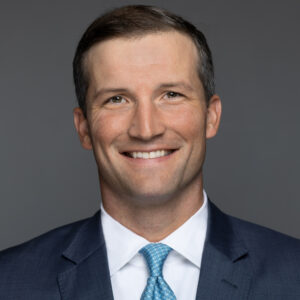Smart Business
(by Sue Ostrowski featuring Moore Capito)
West Virginia scored a huge win when it landed the contract for the high-tech Virgin Hyperloop Certification Center in October. Now the state — and the region, including Pittsburgh — are looking to build on that success.
“We’re hoping this is going to be a jumping off point,” says Moore Capito, a shareholder at Babst Calland who also serves in the West Virginia House of Delegates. “Any time you can lend a huge name like Virgin, it certainly gives the region an increased amount of credibility.”
Smart Business spoke with Capito about what the project means for the region and how its success could attract other big projects — and jobs — to West Virginia and Pennsylvania.
What is the Virgin Hyperloop Project?
In general, a hyperloop is an experimental, next-generation mode of transportation that will transport passengers through a network of under- and above-ground tubes, capable of reaching speeds of 670 mph. The goal is to transform transportation, and the broader economy, so that travel that previously took hours will instead take minutes.
More specifically, the Virgin Hyperloop Project, with substantial investments from Sir Richard Branson and DP World Ports, is headquartered in Los Angeles and has been primarily testing the technology in Las Vegas. As part of its growth, Virgin sought a location for a certification center to serve not only as a venue for moving the technology forward but as a place where they could create a regulatory framework.
Regulations cover other modes of transportation — air, rail, sea, cars, trucks — but hyperloop is a grey area. This center will build out that regulatory framework around this new mode of transportation to certify that it is viable for commercial use.
What does the project entail?
The project is located on 800 acres where, in addition to the center, Virgin plans to build a six-mile hyperloop track. The undulation of the West Virginia landscape made it an attractive location to test how robust the pods must be to traverse such terrain.
At this point, the timeline is very broad, with 2021 focused on design, planning and feasibility of facilities. The goal in 2022 is to begin construction on the facilities. That construction will be rolled out in phases, with an end goal of certification by 2025.
How will this project benefit not only West Virginia, but the entire region?
Directly, the project is expected to create somewhere between 150 to 200 engineering and technician jobs, with thousands of additional indirect jobs in areas that could include maintenance, construction and manufacturing. It allows firms that have expertise in emerging technology — including businesses in the Pittsburgh area — to showcase that expertise and focus on mobility.
It’s been such an uplifting dialogue. There have been conversations, for instance, on how to increase regional entrepreneurship to modernize the economy to attract and retain new talent. We want people who want to jump in, but they need a pool to jump into.
This project gives people another reason to talk about the region’s capabilities. This is a fertile region for developing emerging technologies, and it’s exciting to see it move in this direction and to see more eyes on our region.
West Virginia is showing its commitment to modernizing and growing and engaging. Its technology movement is on the march.
This is a sign of more things to come as West Virginia continues to grow in this emerging technology, benefiting not just the state, but the greater region, as well.
For the PDF, click here.
For the full article, click here.
